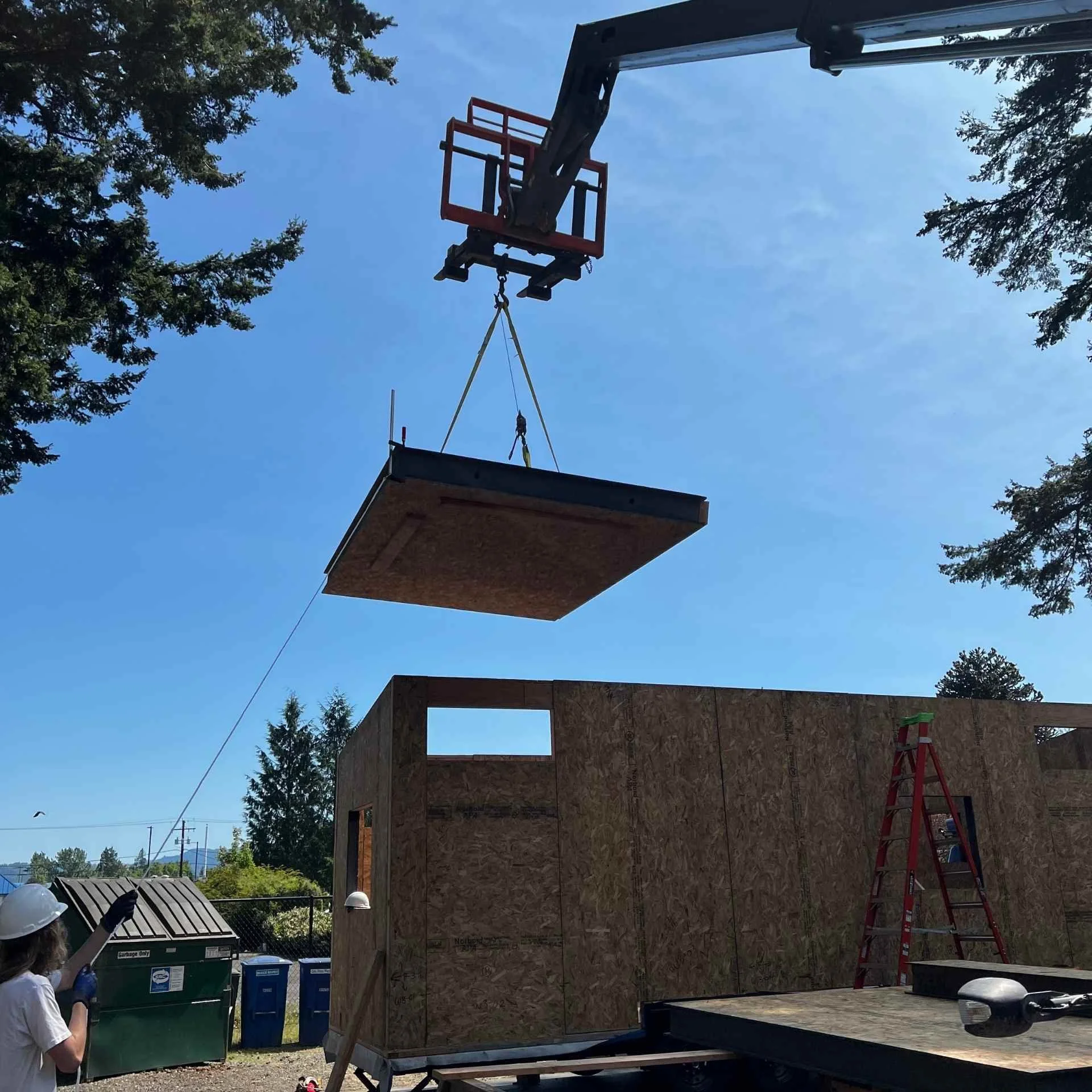What is Carbon Sequestering, anyway?
A1DesignBuild is a designer and builder of homes in Bellingham and Whatcom County, Washington. We specialize in everything from home remodels to complete high-performance home builds, and our over 70 years of providing excellent service to the community assures that your home project gets done right - each and every time.
What is Carbon Sequestering in Building Homes?
Carbon sequestering in building homes is a revolutionary shift in sustainable construction that transforms buildings from carbon emitters to carbon storers. Traditionally, building materials like concrete, steel, and glass are highly carbon-intensive, releasing massive amounts of CO₂ during extraction, manufacturing, and transportation. In contrast, carbon-sequestering construction aims to capture and lock away atmospheric carbon within the materials themselves—effectively turning the built environment into a long-term carbon solution.
This approach is a natural complement to Passive House and Net Zero Energy design, which focus on reducing a building’s operational emissions (heating, cooling, lighting, etc.). However, even the most efficient buildings can have significant embodied carbon—the emissions associated with their construction. Carbon sequestering addresses this issue by using materials that absorb more carbon than they emit during their life cycle, making it possible to achieve not just Net Zero but Net Negative buildings. Pretty good, don’t you think?
Why Carbon Sequestering is Important for the Environment
The building and construction sector accounts for nearly 40% of global carbon emissions, and a large portion of that is embedded in building materials and construction processes. As the world seeks to meet ambitious climate goals, reducing operational emissions is no longer enough—we must also address embodied carbon.
Carbon-sequestering materials:
Help reduce atmospheric CO₂ levels.
Provide long-term carbon storage (often for 50-100+ years).
Support regenerative practices in agriculture and forestry.
Create healthier, lower-impact alternatives to conventional materials.
In essence, carbon-sequestering construction allows buildings to participate in climate restoration, not just mitigation.
Putting the roof on Project ZeNETH, a NET ZERO high performance tiny home built by A1DesignBuild in collaboration with Western University.
Innovative Materials and Technologies That Enable Carbon Sequestering.
The following materials and technologies are really making a profound difference. Consider them for your next project or ask us how:
Cross-Laminated Timber (CLT)
Engineered from layers of solid wood, CLT stores carbon absorbed during the tree’s life. When sourced from sustainable forestry, it’s a strong, renewable alternative to steel or concrete.Hempcrete
Made from hemp hurds (the woody core of the hemp plant) mixed with lime, hempcrete sequesters carbon as the hemp grows. Even after installation, the lime continues to absorb CO₂ over time, making hempcrete a dynamic carbon sink.Mycelium Insulation
Grown from the root structure of fungi, mycelium-based materials require minimal energy to produce and naturally store carbon. They are biodegradable, fire-resistant, and offer excellent thermal performance.Biochar Concrete
Biochar is a stable form of carbon made by heating organic waste in a low-oxygen environment (pyrolysis). When mixed into concrete, it not only sequesters carbon but also strengthens the material and improves water retention.Straw Bale Construction
Straw absorbs atmospheric carbon as it grows. When compacted into thick bale walls, it acts as insulation and stores carbon long-term—an old technique gaining new relevance.CarbonCure Technology
This innovation injects captured CO₂ into concrete during mixing. The CO₂ reacts with calcium to form calcium carbonate, which becomes permanently embedded in the concrete, reducing its carbon footprint.Algae-Based Panels and Facades
Living algae systems can be used in building facades to photosynthesize and capture carbon in real-time. Some designs also generate biomass that can be harvested for biofuel or other uses.Mass Timber Products
Beyond CLT, mass timber products like Glulam and LVL (Laminated Veneer Lumber) also sequester carbon. They’re versatile, strong, and increasingly used in mid- and high-rise construction.
Need more info? Read our blog post about our design process.
Looking Ahead: The Future of Carbon-Sequestering Buildings
Carbon-sequestering homes represent a major advancement in climate-resilient architecture. As regulatory bodies, architects, and builders begin to prioritize life-cycle assessments and embodied carbon tracking, these materials will become more mainstream.
Moreover, innovations in regenerative agriculture, material science, and circular construction practices continue to unlock new pathways for storing carbon in our buildings. Municipalities and green building standards like LEED, Passive House, and Living Building Challenge are already beginning to reward these forward-thinking practices.
In the coming decades, buildings won’t just be passive or energy-efficient—they will become active agents in the fight against climate change. Carbon sequestering in home building is a vital tool for achieving global climate goals. By integrating regenerative materials and carbon-storing technologies into residential construction, we can turn homes into a part of the solution. Technologies like bio-based insulation, mass timber structures, or carbon-injected concrete can help capture and hold carbon - creating homes that don’t just shelter people, but also help the planet. sounds pretty good, doesn’t it?
Want to discuss new ways to make your home more carbon neutral? Make contact and let’s chat.

